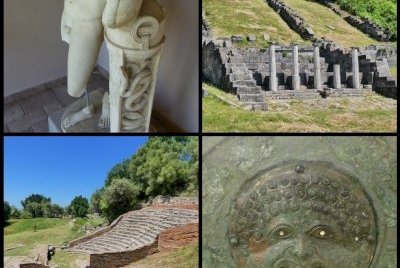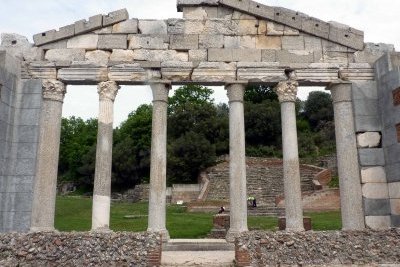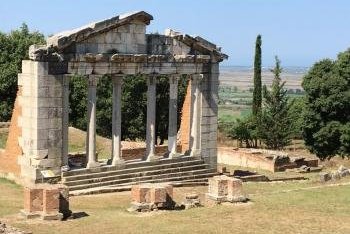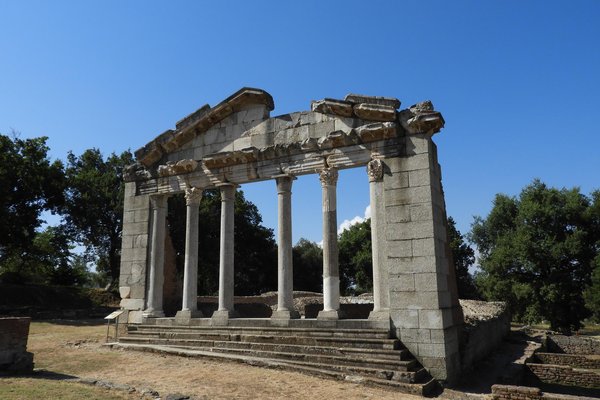Albania
The Ancient City of Apollonia
Site Info
Official Information
- Full Name
- The Ancient City of Apollonia (ID: 5885)
- Country
- Albania
- Status
-
On tentative list 2014
Site history
History of The Ancient City of Apollonia
- 2014: Added to Tentative List
- Added to tentative list
- Type
- Mixed
- Criteria
Links
- UNESCO
- whc.unesco.org
All Links
UNESCO.org
- whc.unesco.org — whc.unesco.org
Community Information
- Community Category
- Wildlife habitat: Fauna
- Archaeological site: Ancient Greece
Travel Information
Recent Connections
News
No news.
Recent Visitors
Visitors of The Ancient City of Apollonia
- Alexander Lehmann
- Ask Gudmundsen
- Astraftis
- Can SARICA
- Christian Wagner
- Clyde
- Corinne Vail
- Csaba Nováczky
- Dan Pettigrew
- David Berlanda
- Dimitar Krastev
- Erik G
- Errol Neo
- George Gdanski
- GerhardM
- Hadrianus
- Harry Mitsidis
- henrik_hannfors
- Jana and Matt
- Jarek Pokrzywnicki
- Jonas Kremer
- jonathanfr
- Kasper
- Lisu Marian
- Little Lauren Travels
- PabloNorte
- Patrik_globe
- Paul Schofield
- Pincze
- Rafał Kałczuga
- Reiseblitz
- Riccardo Quaranta
- Roger Ourset
- Roman Bruehwiler
- Roman Raab
- Solivagant
- Stanislaw Warwas
- StaziG
- Szabolcs Mosonyi
- Tarquinio_Superbo
- Tatiana Nikulnikova
- Tsunami
- WalGra
- Walter
- Zizmondka
Community Reviews
Show full reviews
I visited this tWHS in spring 2022 en route to Butrint from Durres. It is indeed a very big area and if you walk to all the different components of this tWHS a visit can easily take half a day. If you're pressed for time most of the highlights are close to the entrance and a quick visit to the neat museum can suffice.
Like Stanislaw I was mostly surprised by the national importance attached to this site known also as Ilyria and to the Ilyrians in general throughout Albania. It has the same scale as some of the best ancient Greek sites in Greece and Turkey and likewise is full of endangered Hermann’s tortoises and snakes so stay away from overgrown areas. Other than that if you enjoy ruins, this is definitely one of the best places Albania has to offer together with Butrint and also a great place to hike from one bunker to the next. The highlights not to be missed in my opinion are the museum itself (St. Mary's Church) where more excavations are currently taking place just in front of it, the six columned monument to Agonothetes built in the 2nd century BC, the odeon and the nymphaeum.
Unfortunately, some of the problems mentioned by Solivagant are still true and the site still doesn't have sufficient protection. During the COVID-19 lockdown in June 2020, part of the site was vandalized. Two columns were knocked down, resulting in the almost complete collapse of the …
Keep reading 0 comments
I will try not to repeat observations made by Stanislaw in his review but there are some additional aspects which, I think, are worth covering. In summary - the impression you should gather is that Apollonia is a “significant” classical Greco-Roman archaeological site with a fine “central area” of excavated structures in “good” condition - Bouleterion, Libaries, Odeon etc etc and well worth visiting. Albania has opted for the “Archaeological Park” model for a number of its major sites including this one. The country’s lack of development presumably made it easier to designate quite large areas of countryside for this purpose and, as at Butrint, there is value and pleasure to be gained from simply exploring the sites in a natural setting. The low numbers of tourists compared with many Mediterranean sites is another bonus!
I get the feeling that UNESCO could have this site “pencilled” in for inscription once all the necessary work on protection etc has been done - though how long that might take is another matter! There are a number of notice boards around the site indicating that development money has been provided by various countries and by organisations including UNESCO. The latter’s "Millenium Development Goals Achievement Fund" (MDG-F) has supported both the restoration of Apollonia's museum and the production of a nice little brochure about the site (if you are visiting then you might like to download it from that link as we were not offered it!).
The Museum , situated in Byzantine monastery buildings …
Keep reading 0 comments
Visited August 2016.
If you ask Albanians what is the most important historical site in their country that every tourist should see, most of them will answer: Apollonia. It can be a bit surprising because Butrinti and even the theatre in Durres are better known for foreign people. In my opinion the reason is that during the communist time Butrinti was totally out of reach but for some scientists – due to its location very close to the border with Greece. It means that people have heard about Butrinti but had no chance to see it. Apollonia was always “open” and in the ’90 even the school groups started visiting Apollonia. Also in school Albanian children learnt more about Apollonia than about Butrint.
Now the site of Apollonia is still being excavated, but only 30% of it was uncovered. You can see the Greek odeon, roman theatre, some baths, porticoes stoas, and a layer of ruins on the site of acropolis. The most impressive is partly reconstructed house of Agonothetes where almost every day just married couples come for a photo session.
Apollonia flourished for 8 centuries and benefited from its location close to the sea, but after the earthquake in 4th century everything ended. The Christian community built a monastery on the foundations of the old temple and now this monastery is a small museum in which you can see artefacts excavated in Apollonia and around.
If you follow the path that leads to the small hill opposite the …
Keep reading 0 comments
